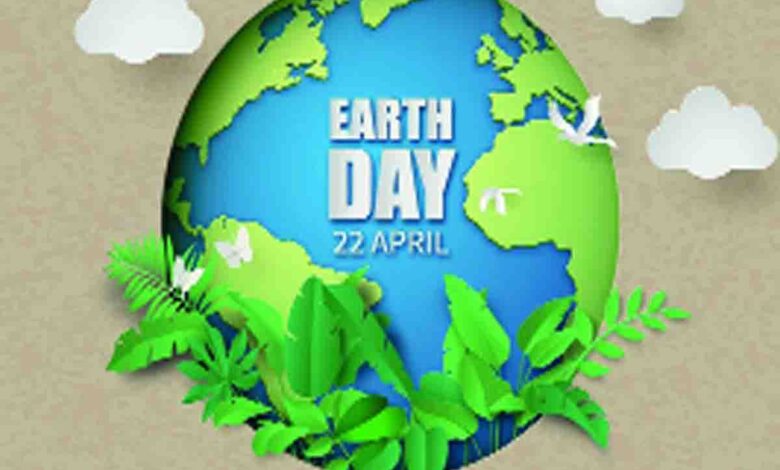Earth Day 2025- Our Power, Our Planet

GUEST COLUMN
 Govind Singh Rajwar
Govind Singh Rajwar
The planet is certainly our power. We are born, use the planet’s resources for our survival, but unlimited greed for its resources has led to exploitation of Earth to an extent which makes the survival of future generations harder. The United Nations General Assembly proclaimed April 22 as International Mother Earth Day through a resolution adopted in 2009. This International Day recognises the Earth and its ecosystems as humanity’s common home and the need to protect her to enhance people’s livelihoods, counteract climate change and stop the decline of biodiversity and degradation of all its resources. The theme for Earth Day 2025 is “Our Power, Our Planet.” The 55th anniversary of Earth Day this year will be a milestone reflecting more than half a century of environmental activism and awareness.
This year’s theme encourages people, organisations and governments to use renewable energy sources and build a sustainable future. The theme aims to triple the use of clean energy sources by 2030, to end reliance on fossil fuels and the damage they cause to the environment and human health, promote energy equity, and create millions of new jobs worldwide. Among various issues, receding glaciers, rising sea levels and changes in weather cycle patterns are highly alarming.
Considering the alarming rate of receding glaciers due to climate change, the UN General Assembly has declared 2025 the International Year of Glaciers’ Preservation (IYGP). Climate change, man-made changes to nature and adverse activities that disrupt biodiversity like deforestation, land-use change, intensified agriculture, replacement of pasture lands by human settlements, or the growing illegal wildlife trade, can accelerate the speed of destruction of the planet.
The UN Educational, Scientific and Cultural Organisation (UNESCO), jointly with the World Meteorological Organisation (WMO), has facilitated a global initiative that seeks to unite efforts worldwide to protect these vital water sources, which provide freshwater to more than two billion people. Glaciers and ice sheets hold around 70 per cent of the world’s freshwater, andtheir rapid loss exhibits an environmental and humanitarian crisis. In 2023, glaciers experienced their greatest water loss in over 50 years, marking the second consecutive year in which all glaciated regions worldwide reported ice loss.
According to WMO, Switzerland, for example, had a glacier loss of 10 per cent of its total mass between 2022 and 2023. As per the UNESCO report, 50 UNESCO heritage sites with glaciers represent almost 10 percent of Earth’s glacier area, and another study warned that glaciers in one-third of these sites are projected to disappear by 2050. WMO confirmed that 2024 was the hottest year on record, at 1.55 degrees Celsius above pre-industrial temperatures. The 1.5℃ marker is significant because it was a key goal of the 2015Paris Agreement toensure that global temperature change does not rise more than this above pre-industrial levels, while striving to hold the overall increase to well below 2℃. WMO said that the Paris Agreement is “not yet dead but in grave danger”, which explains that the accord’s long-term temperature goals are measured over decades, rather than individual years. Every additional increment of global warming increases the impacts on our lives, economies, and our planet.
Fire incidents in Los Angeles and other parts of the world are another factor for temperature increase and loss to properties, forests, biodiversity and wildlife. A UN international study published in the journal Advances in Atmospheric Sciences, reported that the ocean is the warmest it has ever been as recorded by humans, not only at the surface but also for the upper 2,000 metres. WMO noted that about 90 per cent of the excess heat from global warming is stored in the ocean, “making ocean heat content a critical indicator of climate change”.
Globally, the sea level is rising faster and higher than ever before, creating what the UN has described as an “urgent and escalating threat” to people worldwide. It has been estimated that the oceans have risen by approximately 20-23 centimetres (8-9 inches) since 1880. Rising sea levels result from ocean warming and melting of glaciers and ice sheets, which are important consequences of climate change. Rise in sea level is also threatening the tourism industry in many places.
Thus, rising sea levels have wide-reaching implications not just on the physical environment, but also on the economic, social and cultural aspects of vulnerable nations worldwide. Flooding can contaminate freshwater supplies, promote waterborne diseases threatening people’s health, and cause mental health problems. At the same time, tourism revenues, a key economic driver, especially in many areas such as beaches, resorts and other tourist attractions. It is the very simple fact that the sea level rise is a symptom of climate change.
As global temperatures increase due to climate change, the oceans absorb much of this excess heat. People living in the coastal zones of densely populated countries like Bangladesh, China, India, the Netherlands, and Pakistan will be at risk and potentially suffer catastrophic flooding. Major cities on every continent, including Bangkok, Buenos Aires, Lagos, London, Mumbai, New York and Shanghai, are also at risk. Solutions to mitigate such a catastrophe include building infrastructure like sea walls and storm surge barriers, to protect against flooding and erosion; improving drainage systems and constructing flood-resistant buildings; restoring natural barriers like mangroves; and protecting wetlands and coral reefs to absorb wave energy and reduce the impact of storm surges. Many countries are also using their disaster risk reduction plans, as well as early warning systems, to deal with sea level-related incidents.
Communities may also be relocated in some areas from vulnerable coastal areas as part of adaptation measures, an approach known as managed retreat. Across Asia and the Pacific, women and girls, especially those from rural, Indigenous, and marginalised communities, are at the frontlines of climate change and environmental degradation. While they often bear the brunt of environmental crises, they are also powerful agents of change. Women are stewards of natural resources, innovators in climate solutions and leaders in community resilience in all parts of the world, including the Himalaya. Yet, they continue to face barriers to full and equal participation in environmental decision-making.
The power of the Planet Earth is also recognised as the ecosystem services provided by various ecosystems on all continents. These services include various forms or resources provided by nature for the survival of humans, such as air, water, soil, food, medicine, raw forest and rock materials and minerals, and firewood. Biodiversity is often understood in terms of the wide variety of plants, animals and microorganisms, but it also includes genetic differences within each species. Biodiversity resources are the pillars upon which humans have built civilisation. Fish provide 20 per cent of animal protein to about 3 billion people. Over 80 per cent of the human diet is provided by plants. As many as 80 per cent of people living in rural areas in developing countries rely on traditional plant‐based medicines for basic healthcare. The loss of biodiversity threatens all, including our health. Approximately 9 million types of plants, animals, protists and fungi inhabit the Earth, so too do 7 billion people. Two decades ago, at the first Earth Summit, the vast majority of the world’s nations declared that human actions were dismantling the Earth’s ecosystems, eliminating genes, species and biological traits at an alarming rate.
Earth Day in India, like globally, focuses on raising awareness about environmental issues and promoting sustainable practices on the theme emphasising the need for a shift to renewable energy and triple clean electricity generation by 2030. Any individual can participate in the Earth Day celebrations by educating, advocating, raising public awareness, cleaning up the neighbourhood, creating or finding an Earth Action event, planting trees, undertaking a recycling campaign or spreading the message on social media.
(The author is Asia representative at the International Society of Ethnobiology and a former botany professor; views expressed are personal)






